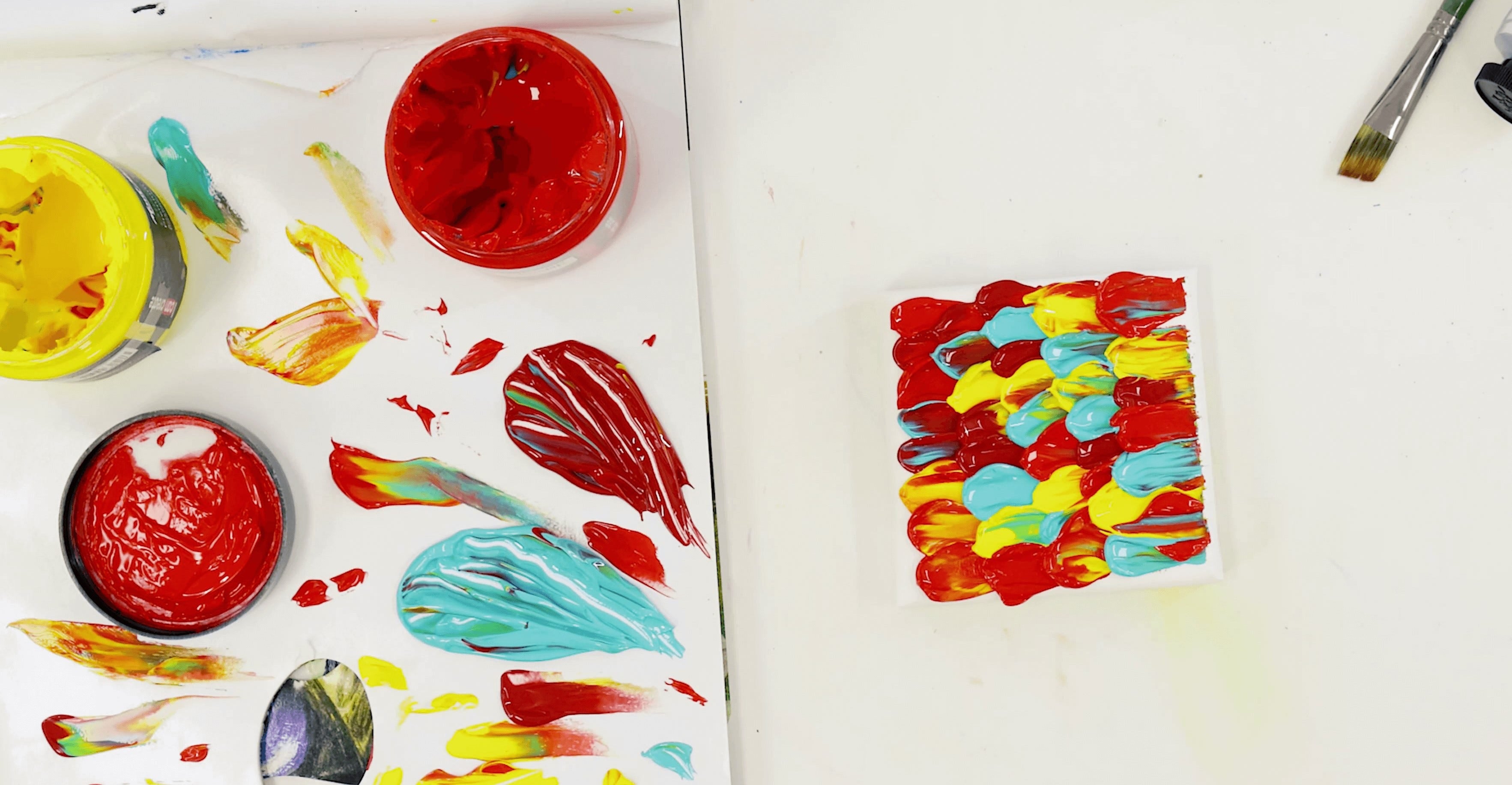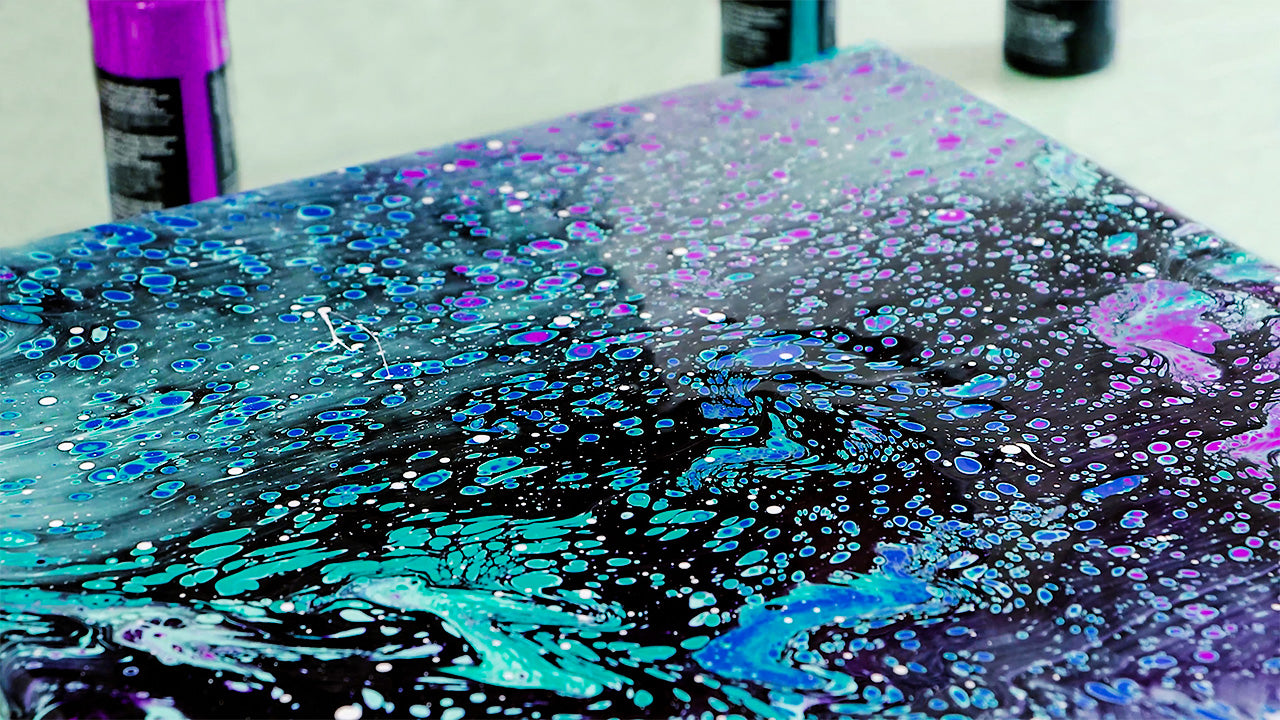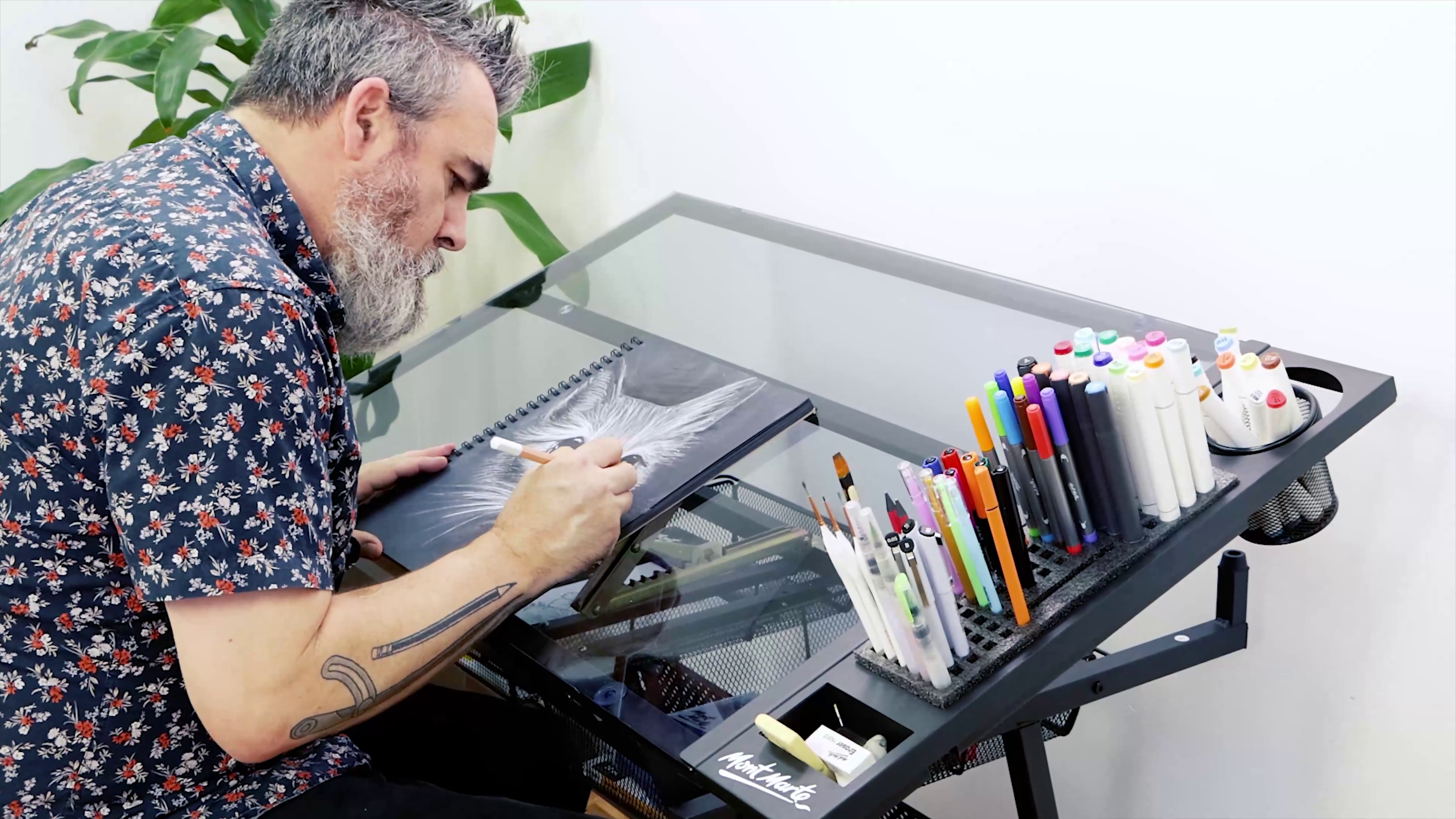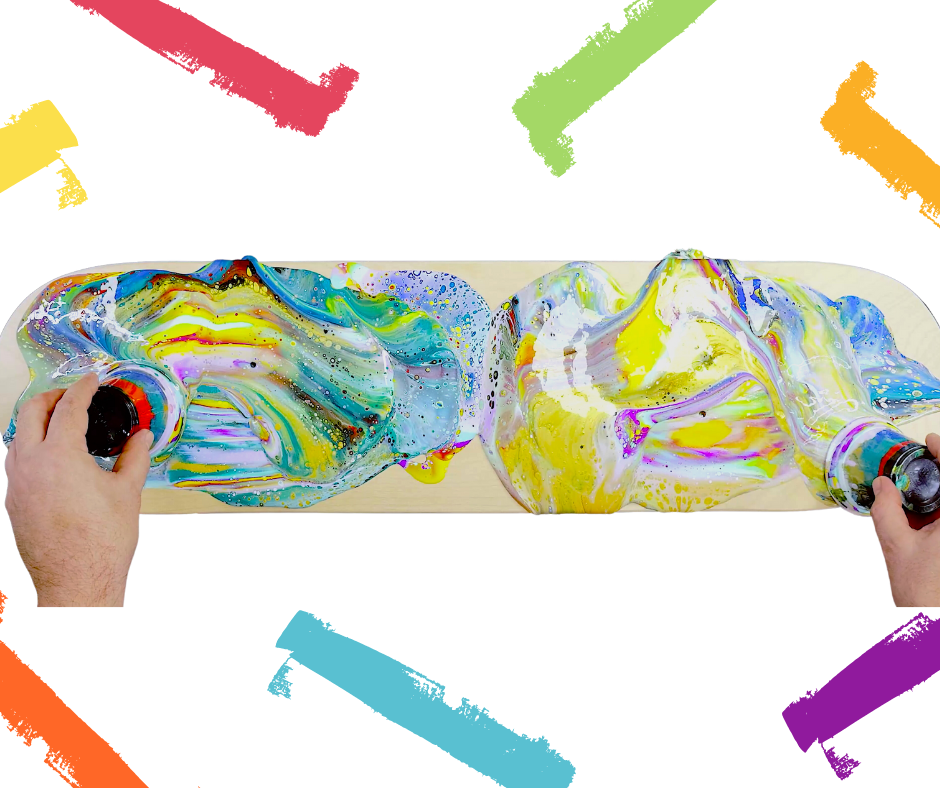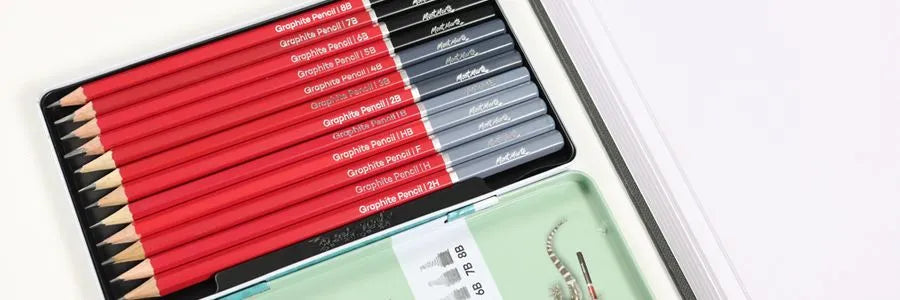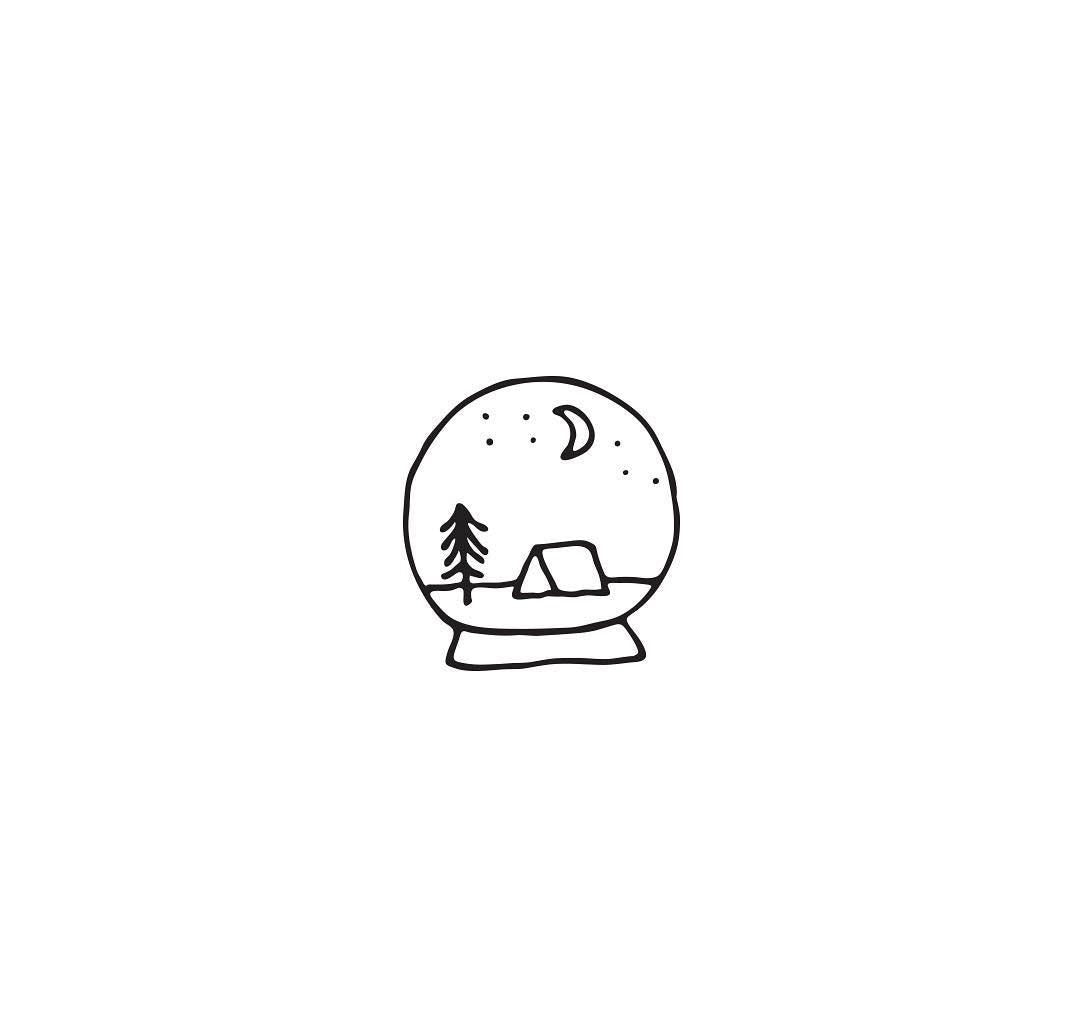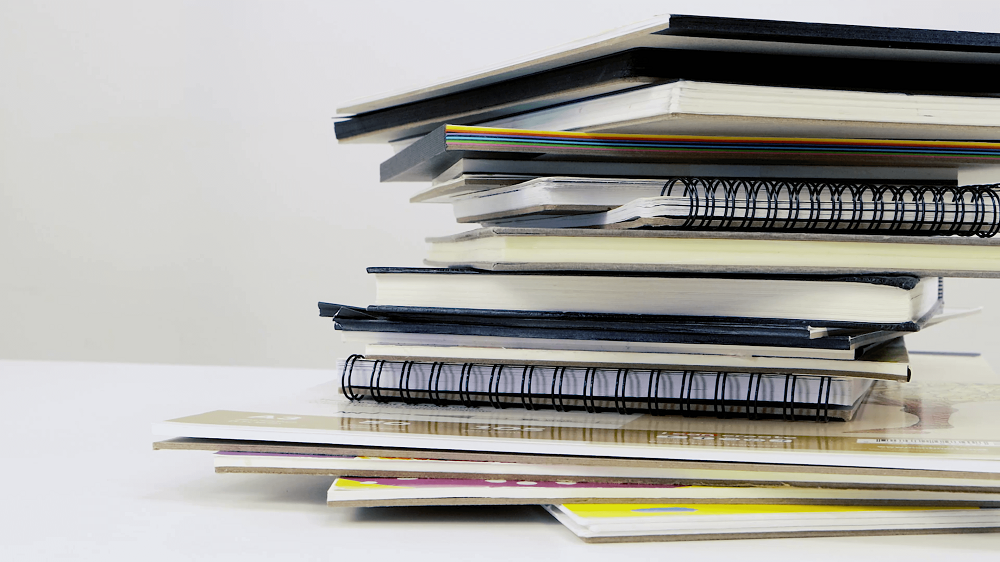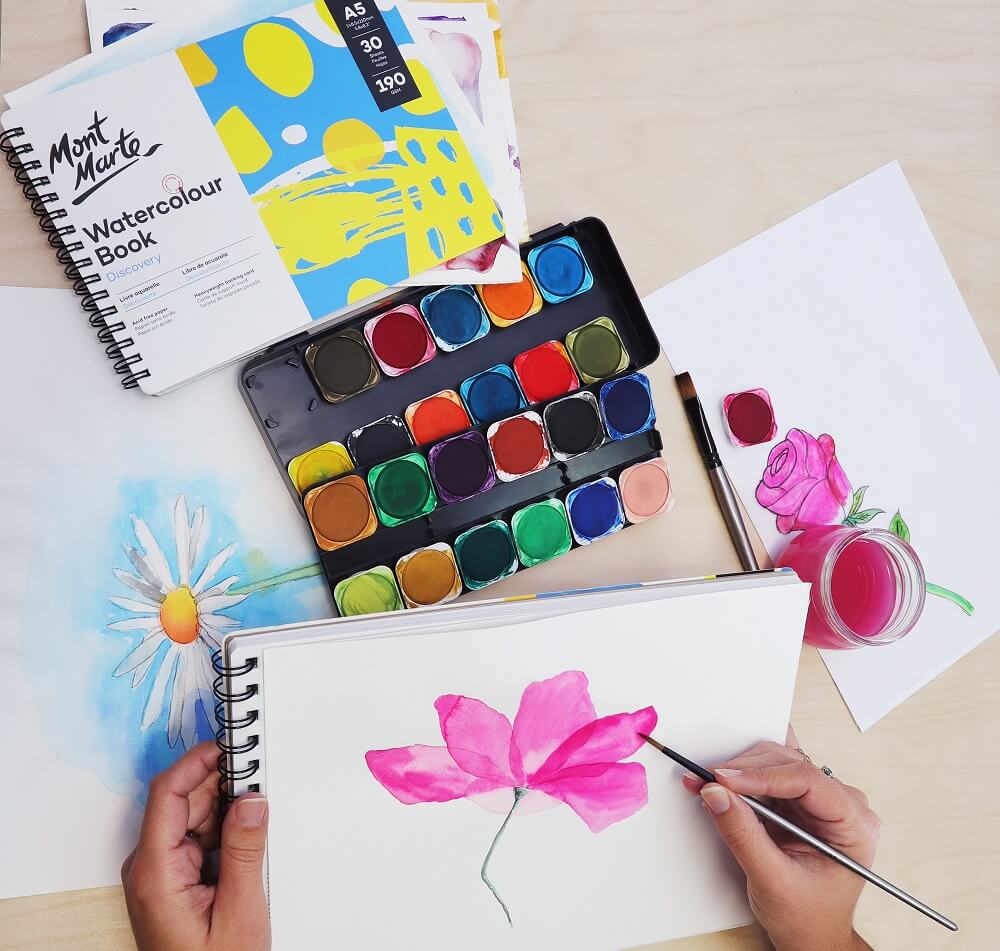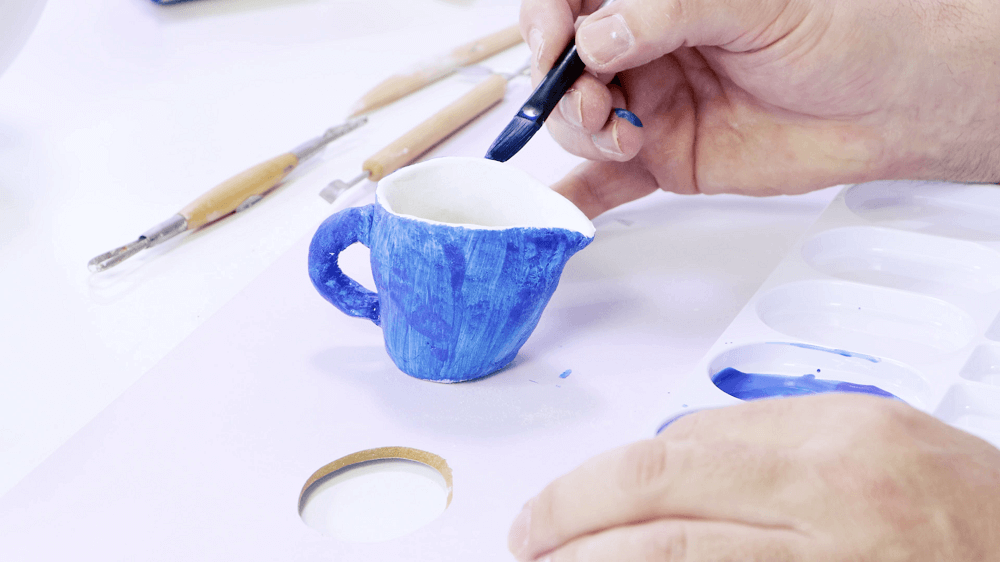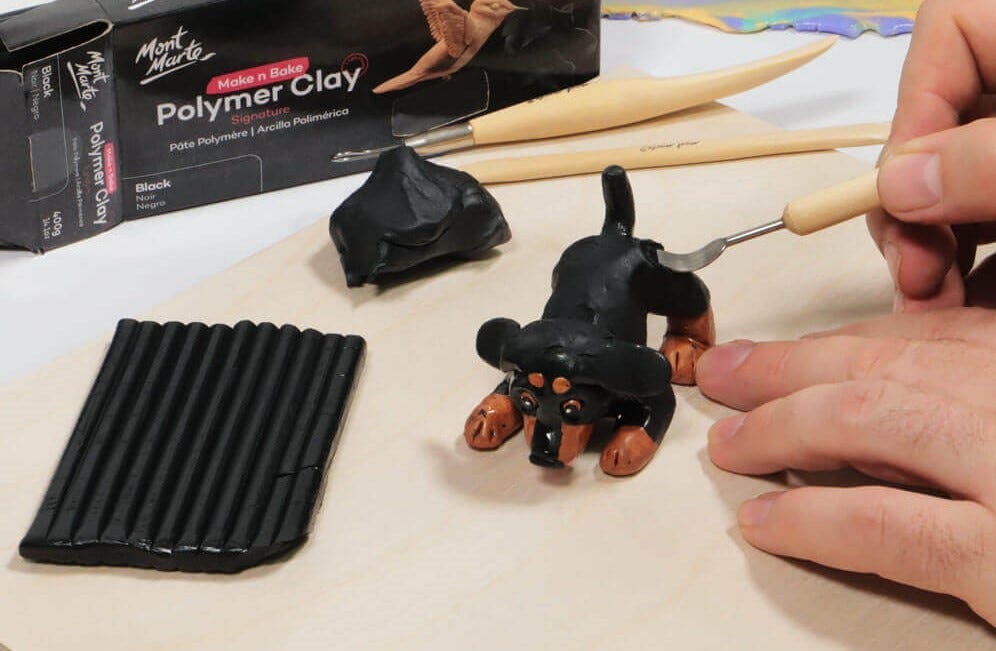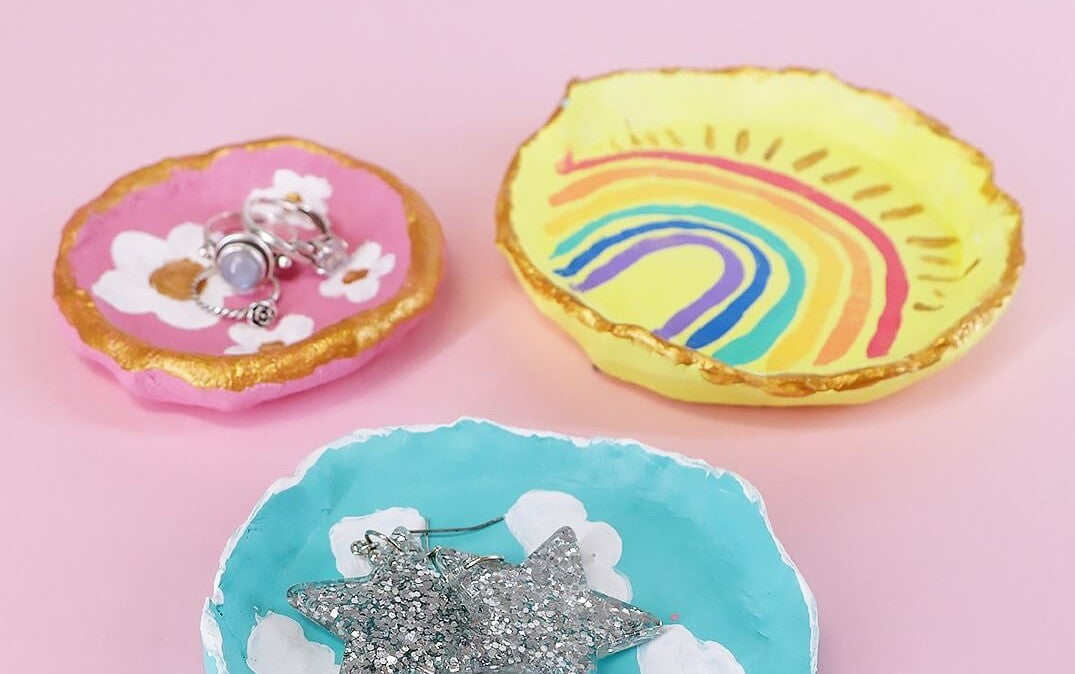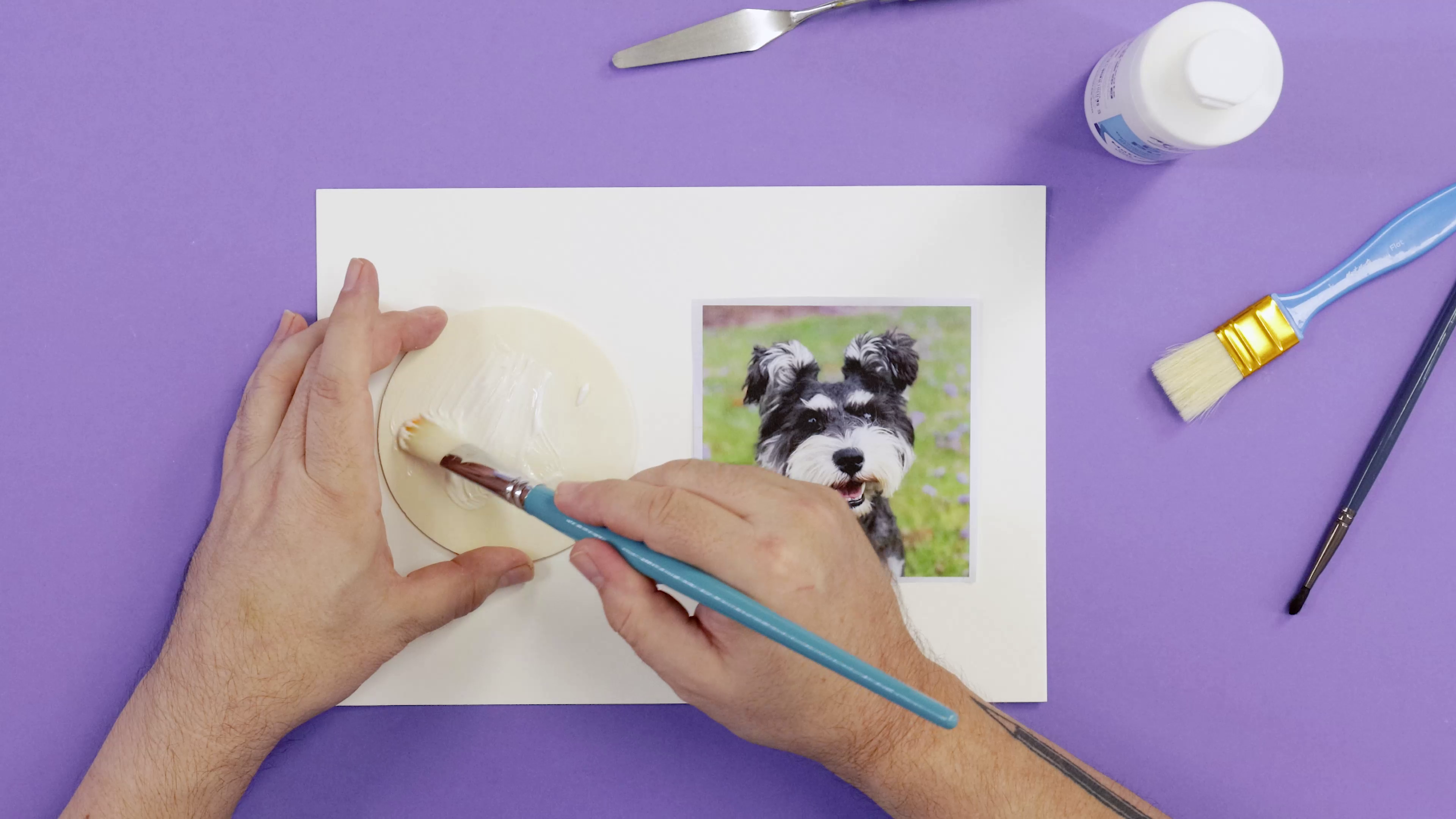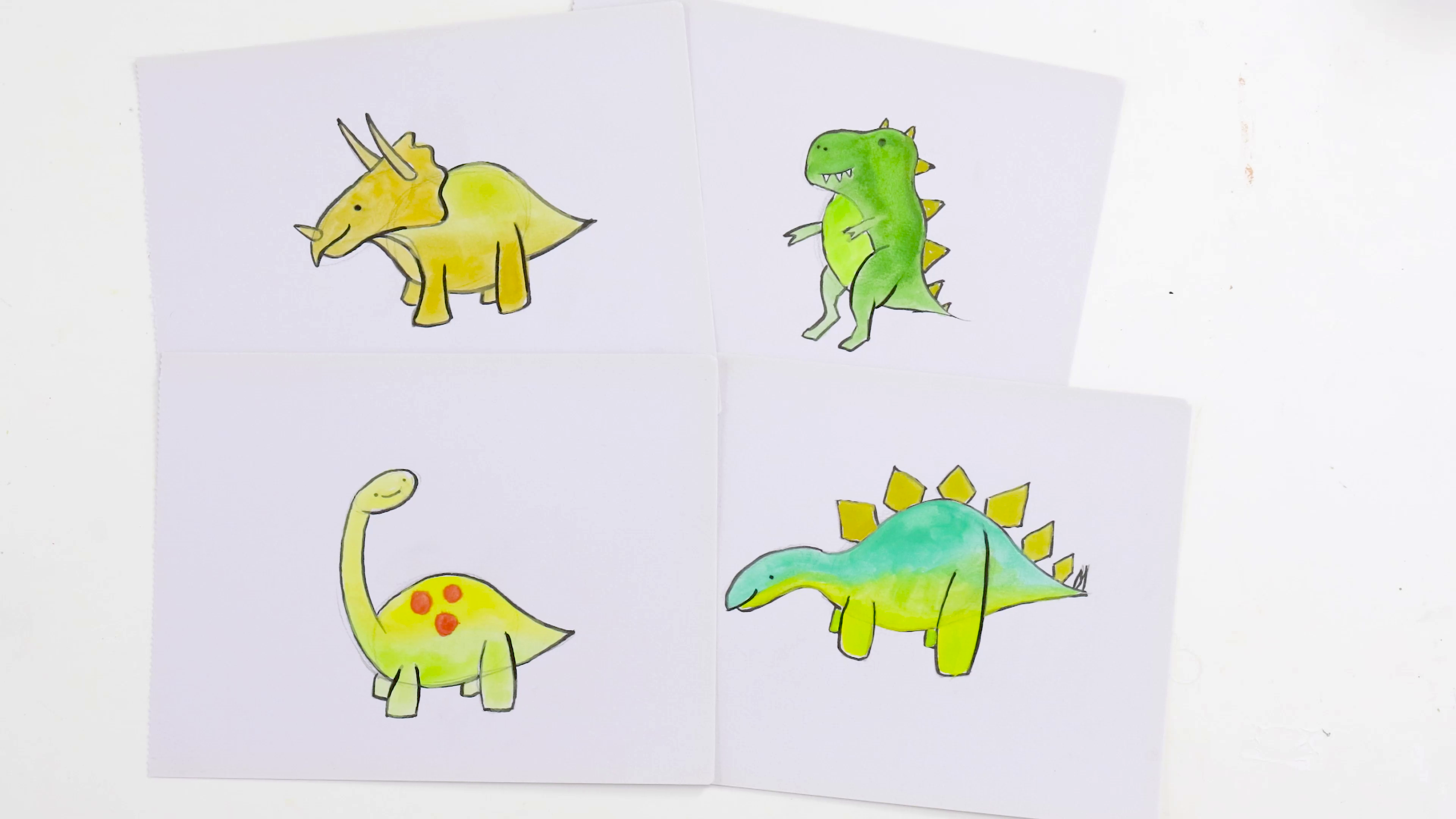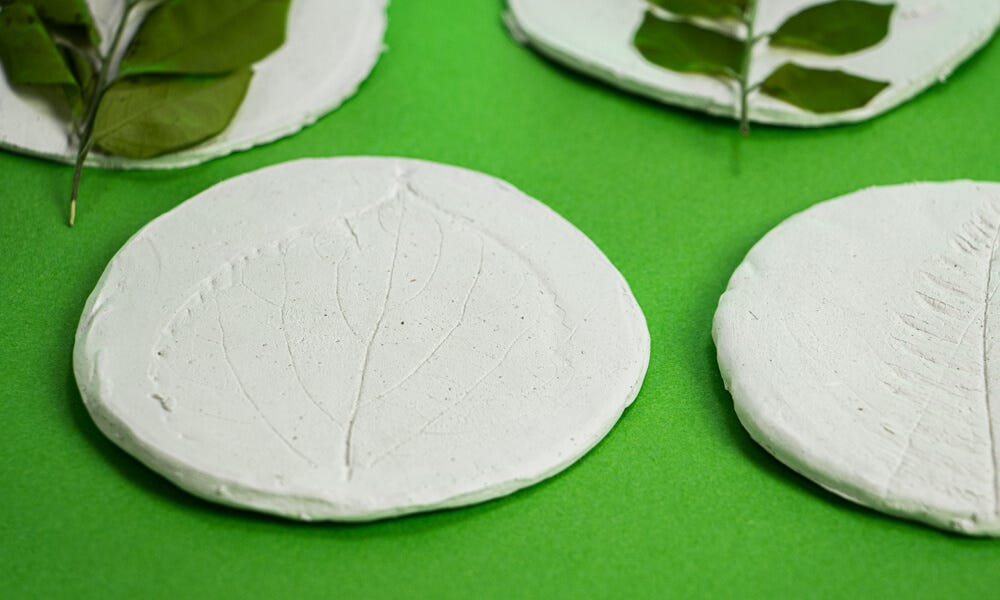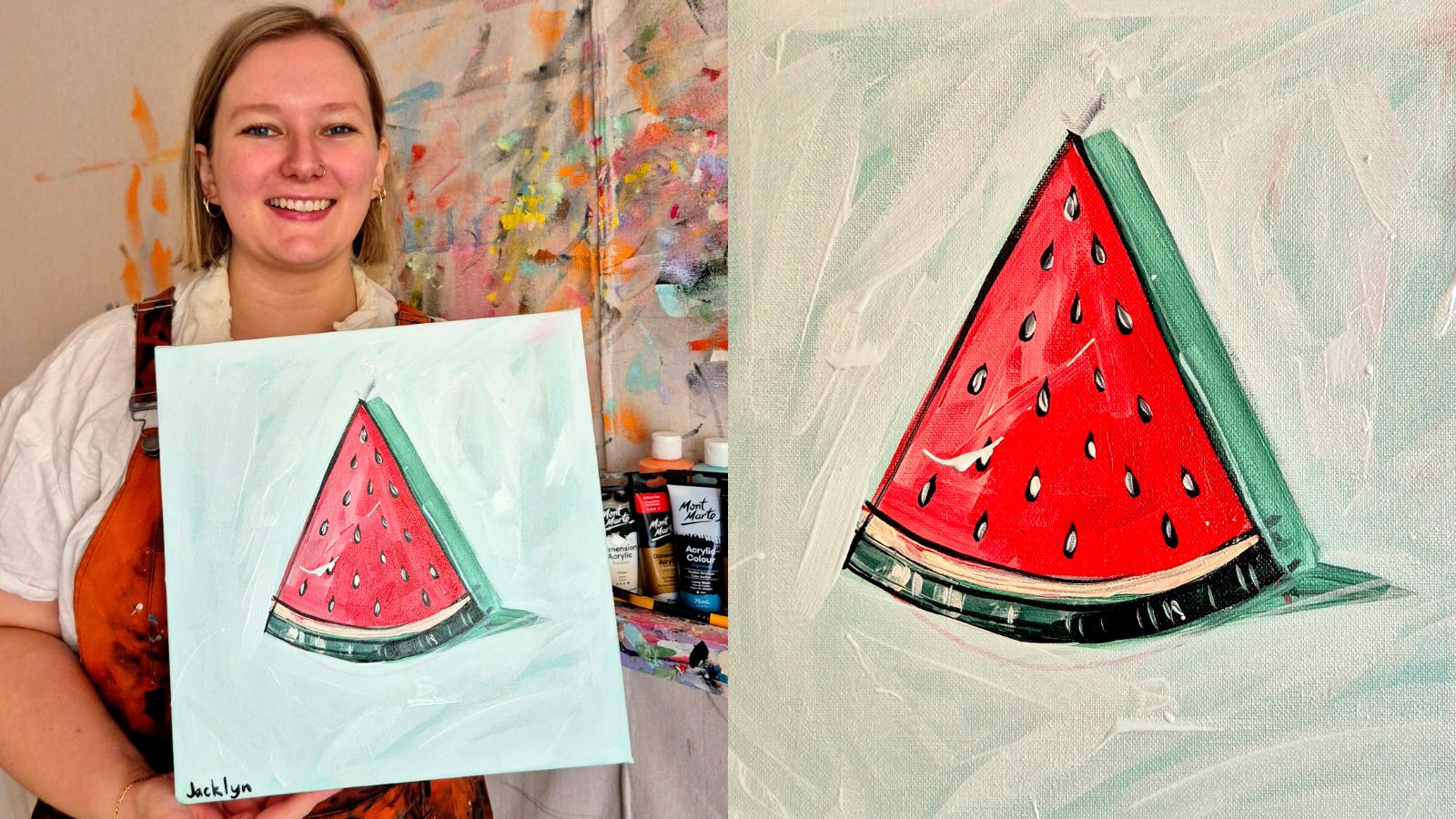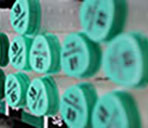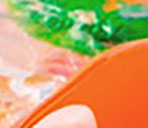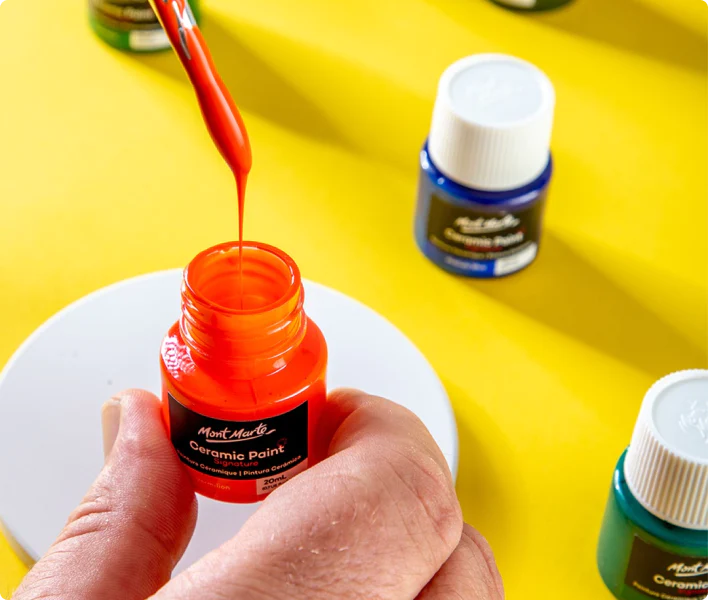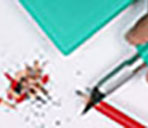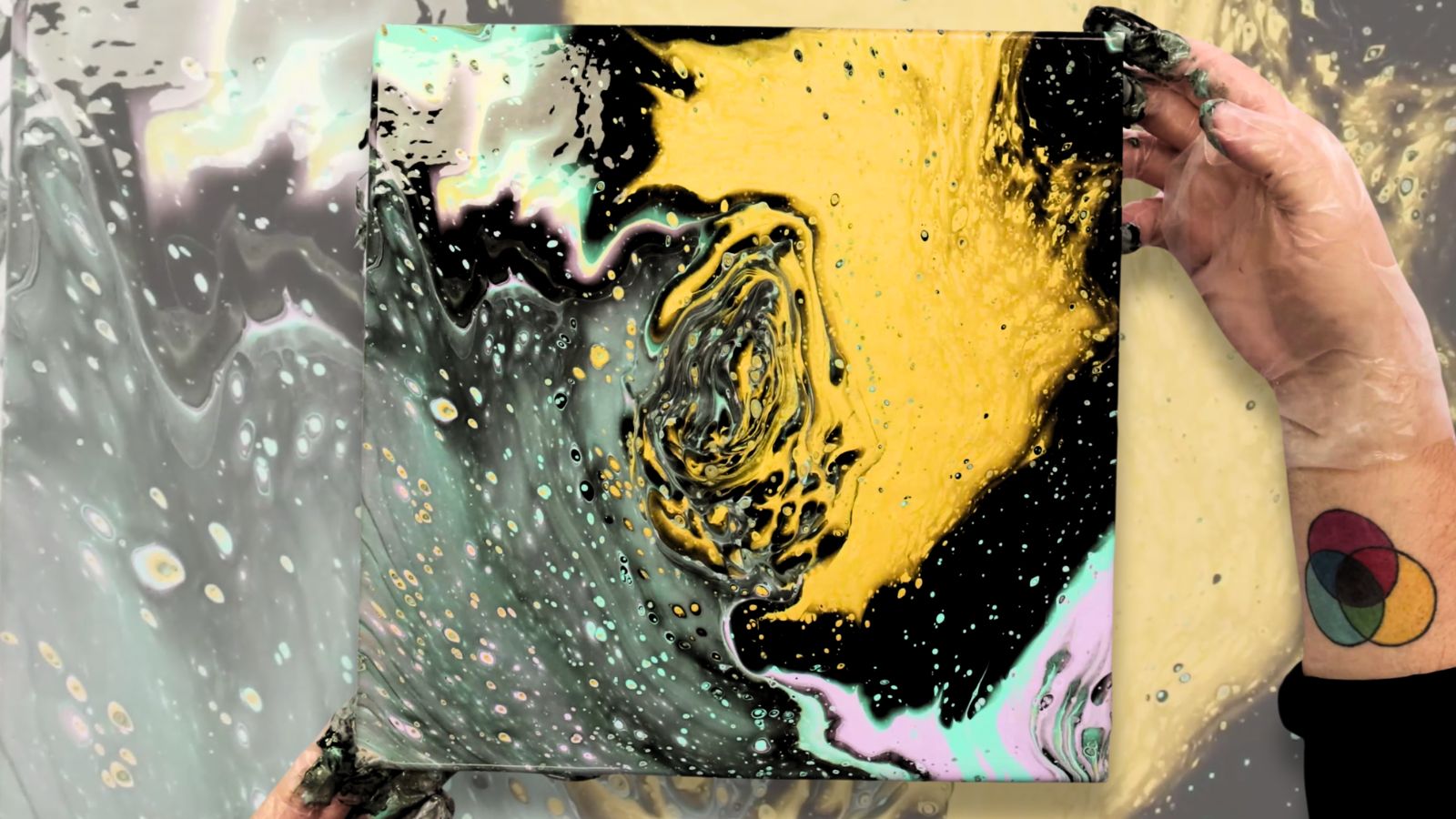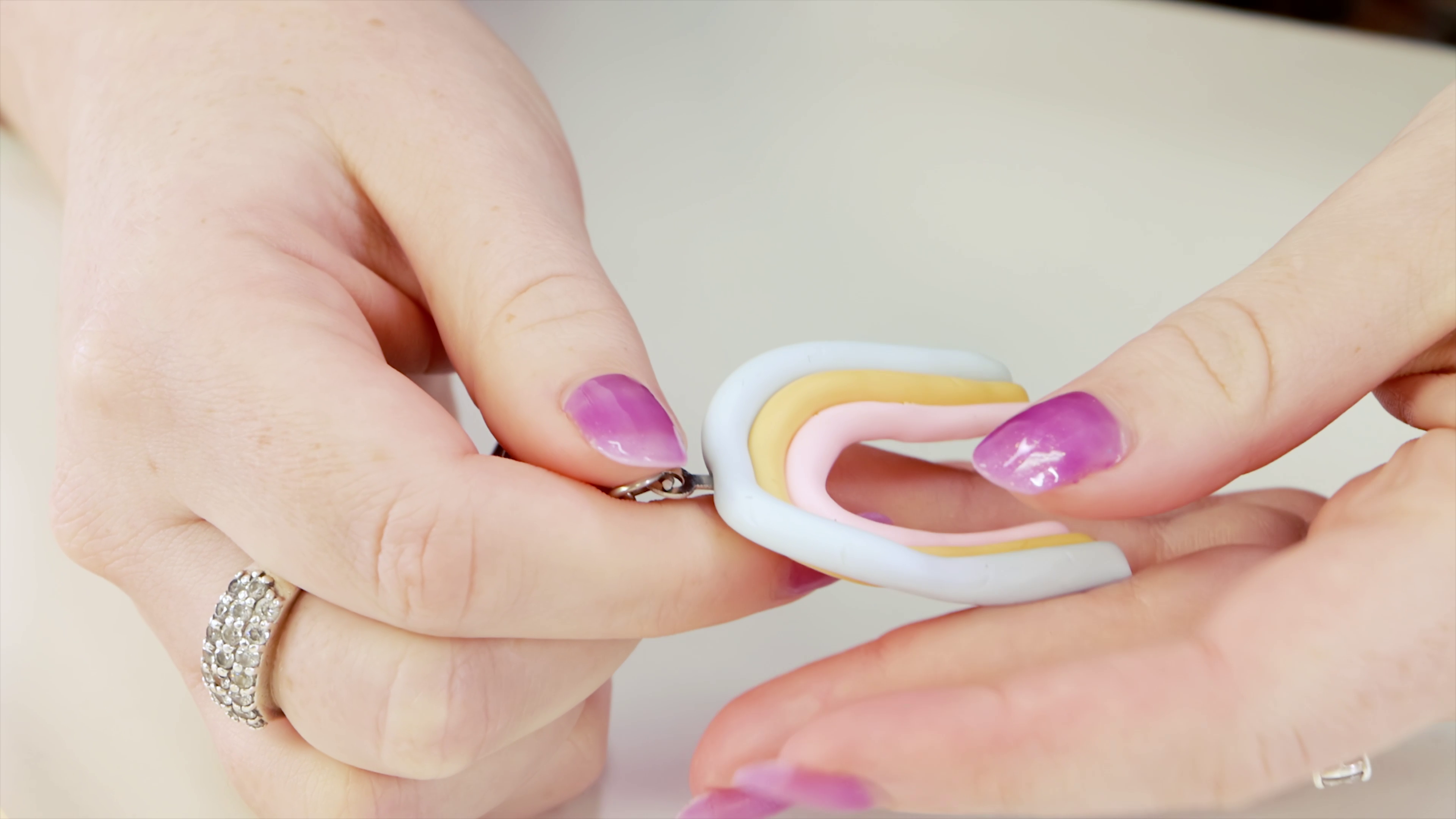If you want to try painting with less rules and more freedom, try some of these abstract art techniques and leave realism behind! Make each style your own by picking unique colours, placement, linework, and patterns. Read on to discover your new fave technique!
1. Drip painting technique
Start by grabbing some acrylic fluid paints, or thin out regular acrylic paint using a medium. This will make the paint easier to drip and flow across your canvas. Pick your favourite colours and consider how they contrast with or complement each other. The level of contrast is entirely up to you; you may want a more analogous colour palette with similar hues, or a bold, contrasting design.
Next, decide if you want to drip paint in any direction freely, or whether you want the drips to run parallel, perpendicular, etc. To get inspired, check out Poppy Key’s abstract drip painting and watch how gravity works in her favour to create parallel drips all along the canvas.
Drip your thinned paint onto your canvas using a brush, squeeze bottle, or pour straight from the bottle. Create a design by layering colours and overlapping lines of paint. You may want to dry the painting between layers or watch how they interact while wet on the canvas.
2. One line drawing
If you like drawing from a reference but still want to try something abstract, try using one line to capture your subject matter. Continuous line drawing is done by keeping your pen, pencil, or brush on the page the whole time while sketching.
We have a couple of projects you can check out to kick-start your artwork, from a landscape to a portrait. Keeping your image minimalistic is the best way to approach this technique, focusing on the outline of your reference rather than the details. Doubling back with creative loops or working from the top down can help minimize too many overlapping lines, keeping your artwork clear and readable.
This style is trending in both interior design and tattoo communities, as it’s modern, sleek, and simple.
3. Colour blocking
This technique, unsurprisingly, is all about colour! Lay down big blocks of colour in whatever shape and placement you like, typically in a one-dimensional, flat style. Your colours may overlap, layer, and blend in places, creating gradients or contrast depending on your chosen palette.
We’ve got loads of inspo in our Colour Blocking Ideas blog, so have a look and pick an artwork to try out at home. You may want to explore organic, freeform shapes or else look at geometric designs with clean lines. There are so many ways to try this technique!
4. Impasto
There are stacks of different textured abstract art techniques, but impasto may be one of the most satisfying. Impasto paint is thick and defined, retaining brushstroke and application texture when dry. Oil Paint is naturally thick for impasto strokes, but acrylic paint may need Impasto medium or Modelling Paste mixed in to hold its shape. Otherwise, you can try out our Dimension Acrylic range, which is made ultra-thick for impasto results.
Load your paint onto a palette knife or a paint brush and dab it on the canvas with a heavy hand. Emphasise parts of your design by adding a 3D effect, or else fill your canvas with layers of impasto strokes and colours. You can use the brush or knife to create texture, or else run a tool through the thick paint to create impressions.
Have a look at our project where we dive into making an easy textured abstract painting to see impasto paint in action.
5. Splatter painting technique
Splattering paint can be done loads of ways and is so fun to experiment with. It’s freeing to fling paint across the canvas, creating large splatters of colour where the paint connects at speed with the canvas. It can be easier to splatter with a more fluid paint consistency, as the paint will spread further when it hits the art surface. You can also try splatting with watercolour, ink, and other fluid mediums. It really depends on what look you’re going for!
A handy tool when splattering colours is a toothbrush. Load your medium onto the toothbrush and flick the stiff bristles above your canvas for a finer spray of dots and colour.
Splattering paint is a popular technique when action painting, iconic to Jackson Pollock’s artwork. We have a feature blog where action painter Bridget Bradley speaks about her art practice, so check it out to get inspired!
6. Geometric abstraction
If you’re into shapes and lines, have a go at Neoplasticism. Most notably associated with Piet Mondrian and Theo van Doesburg, the technique involves bold outlines and rectangular patterns, typically with a primary colour palette. You can put your own spin on the style by picking your favourite colours, changing the weight of your outlines, and exploring other shapes!
See the technique in action by watching our sneaker painting project. We DIY some Mondrian style shoes, so have a look and imagine the possibilities!
7. Pour painting technique
Fluid art is a trending, modern art style with liberating application! It involves layering, combining, swirling, or partially mixing pouring paint colours on a canvas to create unique designs. We’ve got a whole techniques blog devoted to pouring, so jump over and have a look for more inspo.
Fluid art is entirely abstract as the colours typically spread and combine in a unique and organic way every pour. You can control the placement and colours but how they mix is not always predictable! That’s the fun of pouring.
Have a go at some of these abstract painting techniques and explore colours, lines, patterns, and texture at home. Leave realism at the door and create freely!
If you feel inspired to make something, #montmarteart or tag us @montmarteart on Instagram or Facebook. We’d love to see what you come up with!
Check out our tips and techniques page for loads more ideas and inspo. If you need supplies or want to experiment with one of these abstract art techniques, jump online to check out our fluid acrylic paints, texture mediums, paint pens, and graphic pens.


